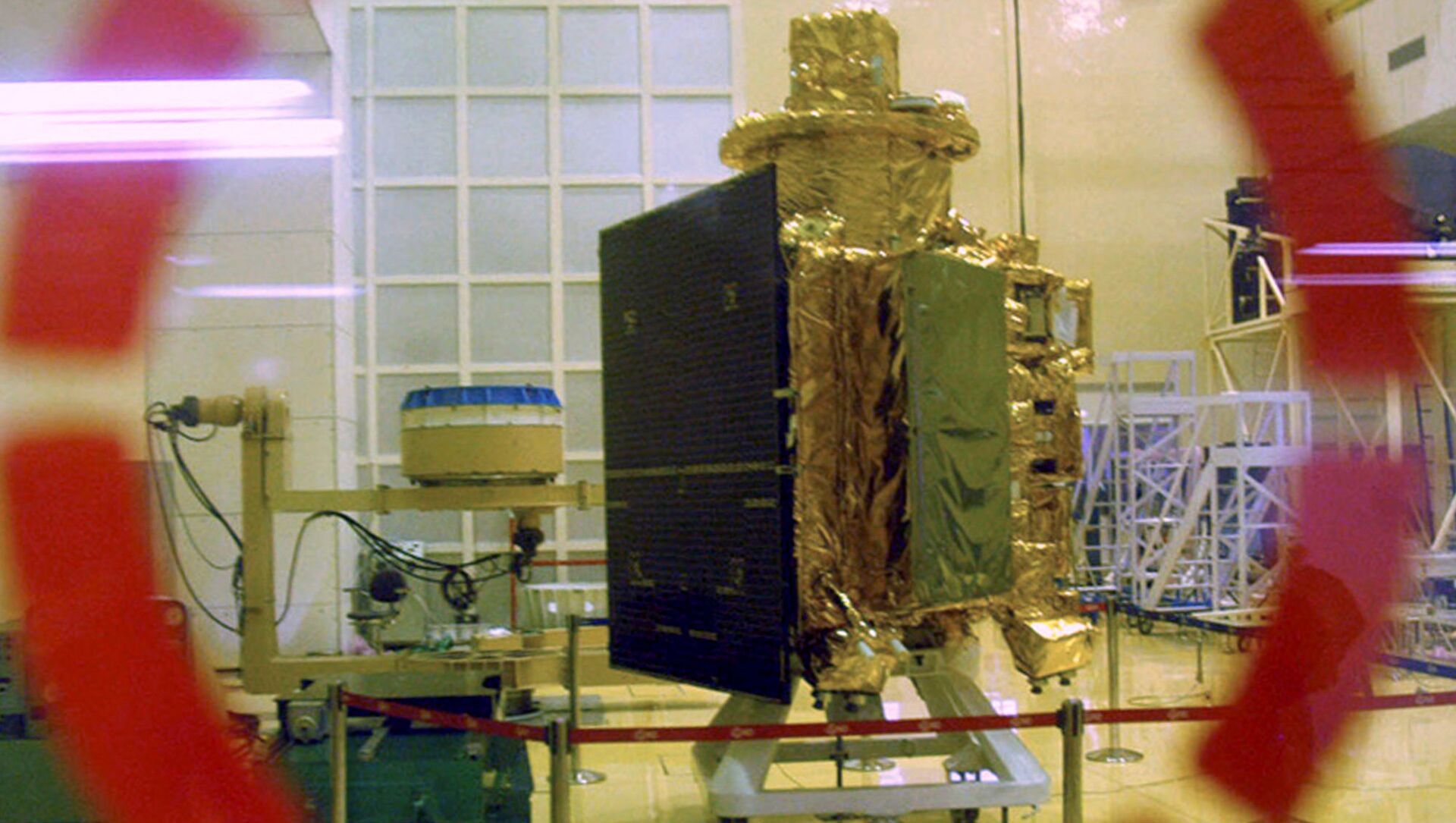https://sputnikglobe.com/20210824/indian-space-agency-seeks-proposal-to-utilise-data-gathered-from-chandrayaan-2-orbiter-1083699954.html
Indian Space Agency Seeks Proposal to Utilise Data Gathered from Chandrayaan-2 Orbiter
Indian Space Agency Seeks Proposal to Utilise Data Gathered from Chandrayaan-2 Orbiter
Sputnik International
The researcher with the winning proposal will have three years to complete the project with financial support. The invitation, described as an 'Announcement of... 24.08.2021, Sputnik International
2021-08-24T09:52+0000
2021-08-24T09:52+0000
2022-07-19T10:38+0000
newsfeed
world
indian space research organization (isro)
chandrayaan-2
https://cdn1.img.sputnikglobe.com/img/105856/10/1058561097_0:257:2000:1388_1920x0_80_0_0_57a3b7397dbbccabc87386bc5fe3de1e.jpg
The Indian Space Research Organisation (ISRO) has called on the nation's scientific community to come up with a proposal on how to analyse and utilise the data from the Chandrayaan-2 orbiter.According to the ISRO, the data gathered from Chandrayaan-1 were extensively used by Indian researchers to analyse and understand lunar morphology, surface age determination, composition of the lunar surface, and studies on the possible presence of magmatic as well as exogenic, or surface, water. At present, the Chandrayaan-2 orbiter is circling the Moon as it conducts experiments for studies ranging from surface geology and composition to exospheric measurements that would continue to build upon the understanding from previous lunar missions.In December 2020, Chandrayaan-2 orbiter payloads data were released to the public for scientific analysis, with more data being released this year. India's second lunar exploration mission, Chandrayaan-2, was launched on 22 July 2019, to explore the far side of the moon. But because of some technical glitch, the rover part of the mission ended when it crash-landed on the surface. However, the orbiter is still floating above the Moon and helping to achieve path-breaking new discoveries. Earlier this month, Chandrayaan-2 detected the presence of water molecules on the moon. The findings of this observation will help the space agency as it plans to launch its next lander-specific lunar mission, Chandrayaan-3, in 2022.
Sputnik International
feedback@sputniknews.com
+74956456601
MIA „Rossiya Segodnya“
2021
Sushmita Panda
https://cdn1.img.sputnikglobe.com/img/07e5/05/12/1082926186_0:0:2048:2048_100x100_80_0_0_4474d0d7e27a36878eb8727832be74b4.jpg
Sushmita Panda
https://cdn1.img.sputnikglobe.com/img/07e5/05/12/1082926186_0:0:2048:2048_100x100_80_0_0_4474d0d7e27a36878eb8727832be74b4.jpg
News
en_EN
Sputnik International
feedback@sputniknews.com
+74956456601
MIA „Rossiya Segodnya“
Sputnik International
feedback@sputniknews.com
+74956456601
MIA „Rossiya Segodnya“
Sushmita Panda
https://cdn1.img.sputnikglobe.com/img/07e5/05/12/1082926186_0:0:2048:2048_100x100_80_0_0_4474d0d7e27a36878eb8727832be74b4.jpg
newsfeed, indian space research organization (isro), chandrayaan-2
newsfeed, indian space research organization (isro), chandrayaan-2
Indian Space Agency Seeks Proposal to Utilise Data Gathered from Chandrayaan-2 Orbiter
09:52 GMT 24.08.2021 (Updated: 10:38 GMT 19.07.2022) The researcher with the winning proposal will have three years to complete the project with financial support. The invitation, described as an 'Announcement of Opportunity', is open to all researchers from recognised academic institutions, universities, colleges, planetariums, and Indian government organisations.
The Indian Space Research Organisation (ISRO) has called on the nation's scientific community to come up with a proposal on how to analyse and utilise the data from the Chandrayaan-2 orbiter.
According to the ISRO, the data gathered from Chandrayaan-1 were extensively used by Indian researchers to analyse and understand lunar morphology, surface age determination, composition of the lunar surface, and studies on the possible presence of magmatic as well as exogenic, or surface, water.
"Such studies from Chandrayaan-1 have considerably expanded the Indian lunar science community. To strengthen the Indian research community for lunar science studies further, Chandrayaan-2 Orbiter payload data are made available to the public and scientific proposals are solicited for scientific analysis," the ISRO said in a statement on Monday.
At present, the Chandrayaan-2 orbiter is circling the Moon as it conducts experiments for studies ranging from surface geology and composition to exospheric measurements that would continue to build upon the understanding from previous lunar missions.
In December 2020, Chandrayaan-2 orbiter payloads data were released to the public for scientific analysis, with more data being released this year.
India's second lunar exploration mission, Chandrayaan-2, was launched on 22 July 2019, to explore the far side of the moon. But because of some technical glitch, the rover part of the mission ended when it crash-landed on the surface. However, the orbiter is still floating above the Moon and helping to achieve path-breaking new discoveries.
Earlier this month, Chandrayaan-2 detected the presence of water molecules on the moon. The findings of this observation will help the space agency as it plans to launch its next lander-specific lunar mission, Chandrayaan-3, in 2022.



